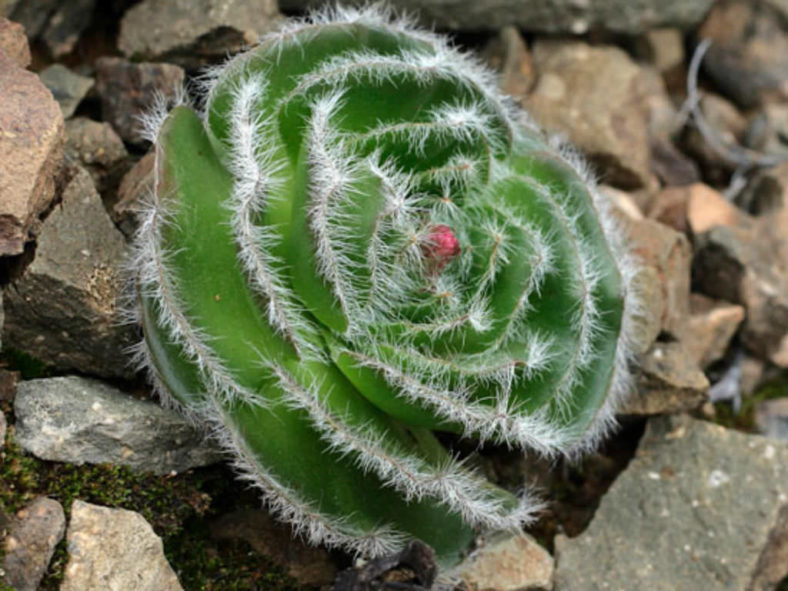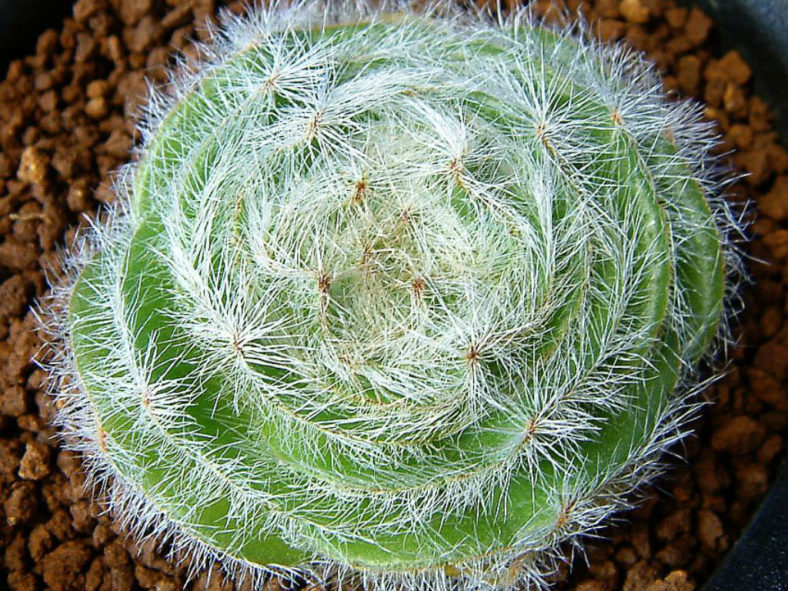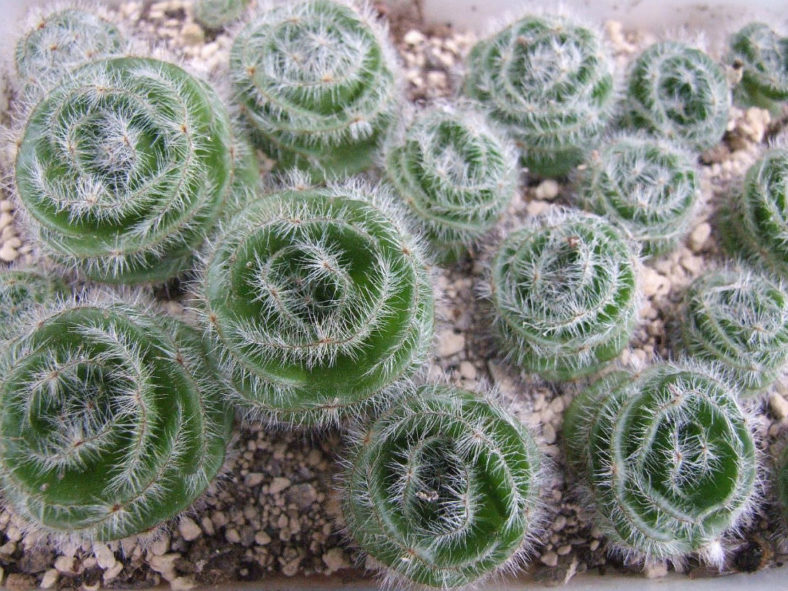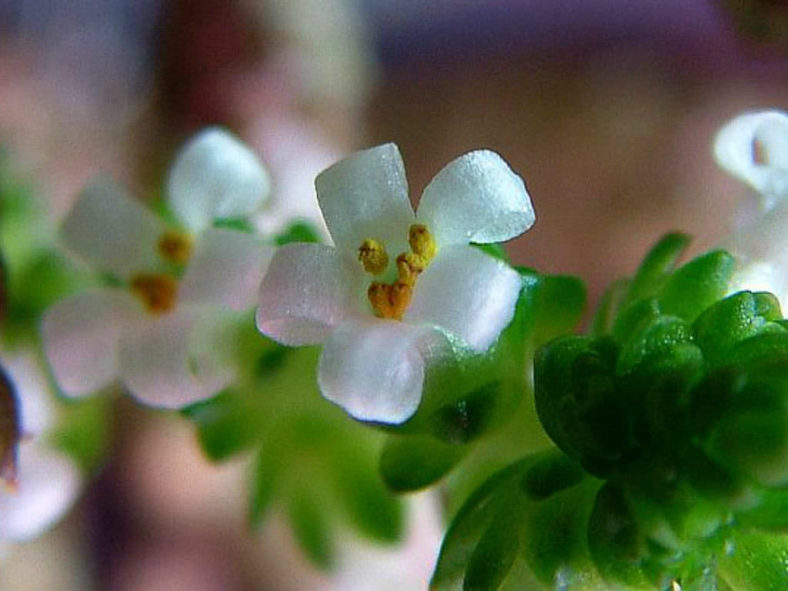Scientific Name
Crassula barbata Thunb.
Common Name(s)
Bearded-leaved Crassula
Synonym(s)
Crassula barbata subsp. barbata, Crassula lettyae, Purgosea barbata
Scientific Classification
Family: Crassulaceae
Subfamily: Crassuloideae
Genus: Crassula
Origin
Crassula barbata is native to South Africa. It occurs from Calvinia to Oudtshoorn and in the Great Karoo near Victoria West, growing on rocky slopes and usually sheltering under bushes.
Description
Crassula barbata is a biennial or annual succulent that forms a basal rosette of smooth, green to grey-green leaves with long white cilia along the margins. It can grow up to 1.2 inches (3 cm) tall, excluding the inflorescence. It is usually solitary or proliferates from the base, forming a small clump over time. The leaves are obovate to almost circular, measuring up to 1.4 inches (3.5 cm) long and 1.4 inches (3.5 cm) wide. The old leaves remain attached to the stems.
A spike-like inflorescence with small, white to pinkish flowers appears in spring, reaching up to 1 foot (30 cm) in height. The plan is monocarpic, meaning the rosette will die after flowering. Fortunately, the dying rosette usually produces several basal rosettes that can be detached and grown on to repeat the cycle.

Hardiness
It is grown as an annual plant, so it does not have a USDA hardiness zone.
How to Grow and Care
Crassulas are easy to grow but susceptible to mealybugs and fungal diseases. Overwatering is sure to be fatal, as with all succulents, so err on the side of too dry rather than too wet. Never let your plant sit in water. If you water from beneath by allowing the plant to sit in a saucer of water, ensure that you pour off any excess water after a few minutes.
These succulents are generally started by division, offsets, or leaf cuttings. Crassulas can be easily propagated from a single leaf. Sprout leaves by placing them into a potting mix for succulents, then covering the dish until they sprout.
Repot as needed, preferably during the warm season. To repot your Crassula, ensure the soil is dry before repotting, then gently remove the pot. Knock away the old soil from the roots, removing any rotted or dead roots. Treat any cuts with a fungicide. Place the plant in its new pot and backfill it with potting soil, spreading the roots as you repot. Leave the plant dry for a week or so, then start watering lightly to reduce the risk of root rot.
Learn more at How to Grow and Care for Crassula.
Links
- Back to genus Crassula
- Succupedia: Browse succulents by Scientific Name, Common Name, Genus, Family, USDA Hardiness Zone, Origin, or cacti by Genus
Photo Gallery
Click on a photo to see a larger version.


